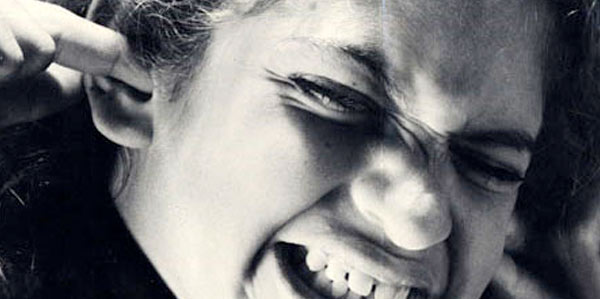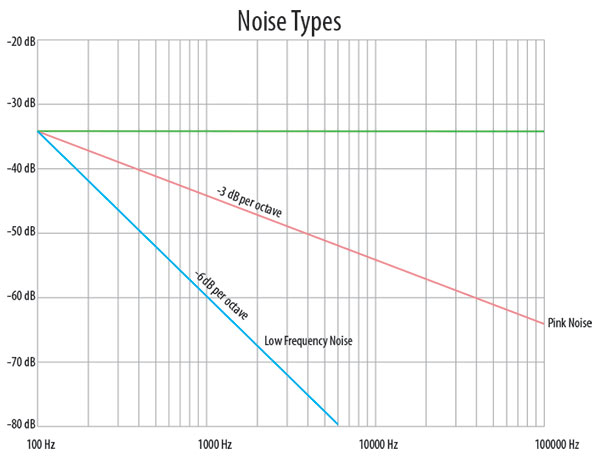Getting Past The Noise
Yesterday’s post about dither was really a few paragraphs about a type of noise and the methods that designers have come up with to combat it. In the case of dither, I explained that we actually add consistent low level noise to a recording to make the quantization noise less obvious…it’s a strategy of “masking” one type of noise with another. In the case of DSD 1-bit recordings, another type of dithering called “noise shaping” is employed to move large amplitude noise out of the “audio band” and into the ultrasonic portion of the spectrum.
Pink Noise (which is a reference signal used to measure and tune acoustic spaces) is equal energy across all octaves (frequencies) that slopes downward at -3 dB per octave as frequency increases. White Noise is similar except it doesn’t have the slope and low frequency noise has a -6 dB downward slope. Acousticians and room tuning experts use the pink version because it turns out that human hearing is more sensitive to high than low frequencies. If you listen to white noise, it sounds hissy and bright when in fact it actually flat with regards to amplitude. See the diagram below:
Figure 1 – The types of noise used in room tuning and equipment evaluation.
Noise can have different sonic signatures as well as amplitudes. The noise associated with analog tape (without using noise reduction schemes like Dolby A or SR) is not subtle and is generally referred to as “tape hiss”. It’s just one of the imperfections of analog tape recording. Still there are many fabulous classic recordings that were recorded on analog tape and the hiss is generally “masked” by the music. Classical music or jazz with pianissimo passages suffers from this type of recording but commercial rock and pop music doesn’t. As we’ve seen the dynamic range of most music played on the radio or distributed on CDs doesn’t have much dynamic range anyway.
As a recording engineer and studio owner, there’s also ambient noise that is simply part of the acoustic environment where you record or do audio postproduction (mixing or mastering). One of the first things I check whenever I’m asked to record in a church or concert venue is whether we’ll be able to shut off the air conditioning. The amount of noise (mostly low frequency in nature) coming from an air handler or compressor can seem subtle on site but ultimately be a real pain during postproduction. There are tools to deal with noise including various filters (low pass, band pass, notch and high pass) but whenever you use any of the available tools, there is some loss with regards to the musical content in amidst the noise.
The ideal situation is to avoid noise during the entire production chain of a project. The recording session should be held in a quiet space (reverberant or not), the equipment used to capture the music should contribute no noise to the recording and the format used to record the output of the microphones shouldn’t add any noise either (we’ve seen that DSD by design has tremendous amounts of noise just above 20 kHz).
How far down is the noise on various recording formats? Knowing this would inform us about the “potential” of a particular format. Of course, it all depends on how you measure things. Advocates of 1-bit DSD must limit their measurements to 20 kHz and below or the 6 dB real SNR across the 1-100 kHz span would scare people away. And I’ll bet few reel-to-reel fans realize that the amount of noise on a virgin piece of tape is only -80 dB and the erase head only gets a prerecorded tape back to -65 dB or so. Not so good.
So when I see a spectragram showing the amount of noise associated with a high-resolution PCM file awash in a fuzz of purple, as I recently did over at CA, it makes one wonder what’s up. It turns out that if you look carefully at the scale on the right of the diagram, the noise floor…the purple haze…is down 125 dB or more! I can live that amount of noise.


